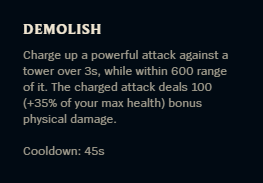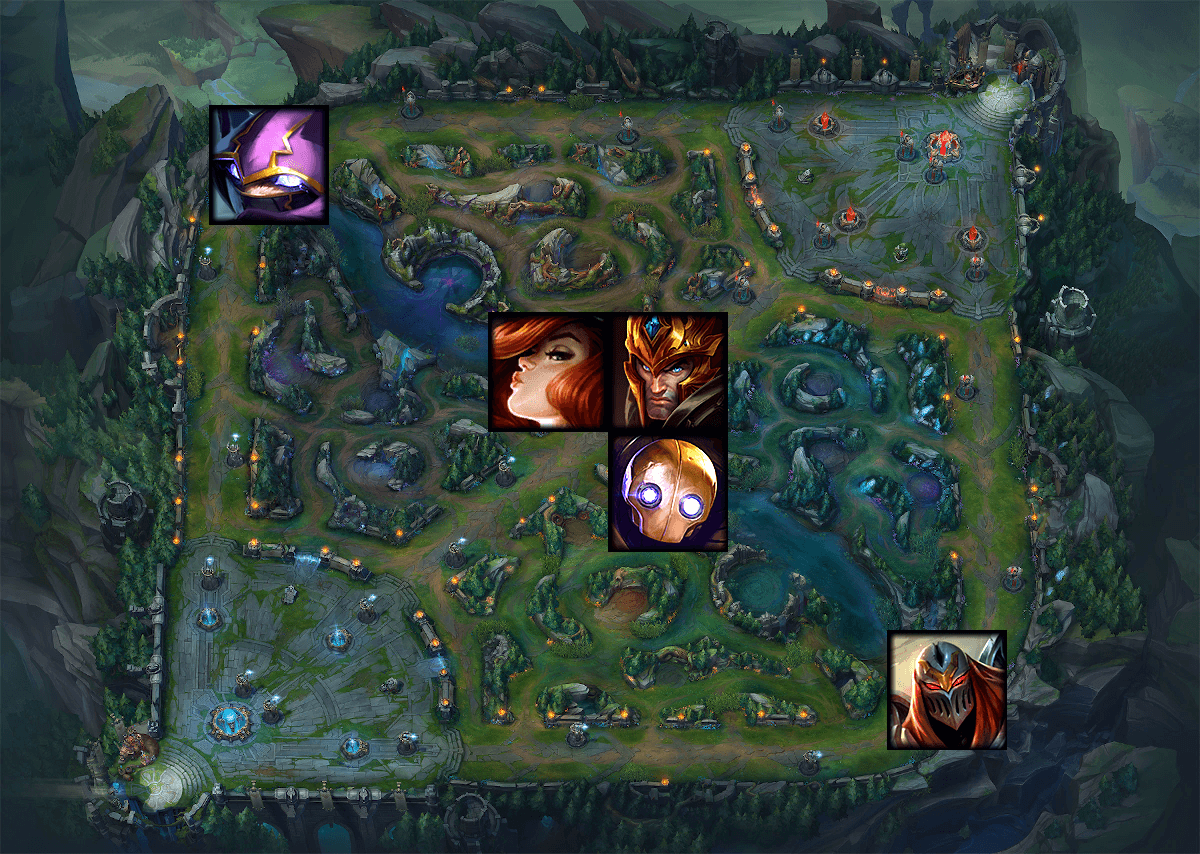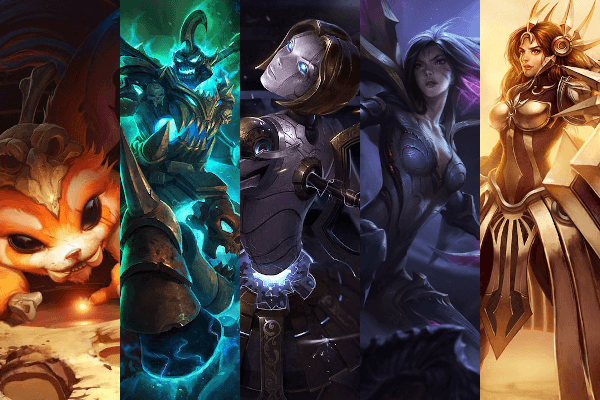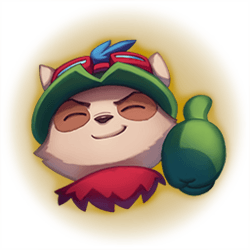How to Close Out a Game in League of Legends
Closing out a game can feel like a frustrating endeavour to the unprepared, so check out this guide to put yourself in control!
Closing out a game can feel like a frustrating endeavour to the unprepared, so check out this guide to put yourself in control!
The early game, the mid game, the late game. Every League of Legends match consists of these three phases, each involving different styles of play and strategies for success. None of these phases matter, however, when compared to the end game; this can come at any time, but it always resolves in the same way, with one winner and one loser. Learning how you can most efficiently achieve a positive end game is essential for success, but takes some knowledge, a little bit of practice, and a lot of thinking on your feet. This guide will help you gain the knowledge necessary.
Before looking at strategies, the first thing to do is to analyse the match that you’re playing in. Each champion, item, player score, and feature on the map is a factor in the way that the game will pan out, and understanding which kind of end game you should push for using this information is key. For the four end games listed below, we will break down exactly how you can identify which one suits your team the best, before breaking them down individually in greater detail.
1. Split Pushing: Split pushing is a slightly more niche end game, and is significantly harder to execute than an all-in ARAM fest. While split pushing itself can be challenging, knowing when it is the right time is not so hard. If your team is not winning 5v5 fights (due to any of the win conditions listed here or otherwise), this should be the very first thing to consider bringing to your game. Having a team with great tower damage (through a Ziggs, Tristana, etc.) and/or super wave clear ability makes this end game doubly viable.
2. Teamfighting: The simplest win condition, and arguably the most powerful when you’re in control, is an all-in, wombo-combo, 5 man fiesta teamfighting composition. When the enemy team is willing to fight but you simply edge them out due to better teamfighting synergy, your end game should always be focused around those killer 5v5s.
3. Objective Control: Winning through your team’s ability to lock down vital objectives is a powerful way to tip the scales in your favour, even if they weren’t looking that way to begin with. This flavour of end game is most recognisable by having a team with huge zone control, through map pressure and ability to burn down a neutral objective faster than the enemy team. This will also require greater cooperation between the players on your team, so this may be harder to find in a solo queue game (but not impossible!)
4. 1v9ing: The phrase “1v9” refers to when 1 champion is so strong they’re taking down all 5 members of the enemy team while simultaneously carrying the other 4 players on their team all by themselves. Of course, this is often an exaggeration, but finding a win through the efforts of one vital carry is not unheard of and should be dealt with as best you can allow. If one player in your game is absolutely dominating, being multiple items, kills and CS ahead of everyone else in the game, you could find yourself in a 1v9 situation and be ready to take the free win.
These are the 4 most common and universal end games that you’ll see in League of Legends, and how to recognise which one your game will likely come down to. Let’s dive into what each of them actually mean, and how they work in-depth.
As previously mentioned, this end game can be harder to master than the other possible outcomes. This is because it relies heavily on great macro play by both your split pushers and their allies, since an unaware split pusher can easily be collapsed on by a well-coordinated enemy ambush. Keeping deep wards, holding on to your escape abilities and lighting more fires than the enemy team are capable of putting out are the components for success in great split pushing and can demoralise your opponents when they think they’re doing everything else right.
Your split pushers should be champions that can find their way out of a tight spot with ease and present a threat to towers/enemy champs in equal measure. Powerful split pushing champions include (but are not limited to) Tristana, Tryndamere, Camille and Irelia, as each has high mobility and will demolish those towers if given the opportunity. Speaking of Demolish, taking this rune in your build is an even greater way to burn through turrets like they weren’t even there, if you can identify in Champ Select that the enemy’s teamfighting potential far outweighs your own.

While your split pusher is off causing havoc to the enemy team’s infrastructure, the rest of your team needs to know what to do in the meantime so that their path to success is as smooth as possible. Pushing other lanes with speed, keeping vision around the map to track the enemy team and falling back when a fight is on the verge of breaking out are all necessary actions to take while a teammate is off split pushing; if the enemy commits to tracking them down and punishing them so that the rest of you have the numbers advantage, take this an an opportunity to fight, push or take down objectives with the freedom your pusher has created for you.
If there are two players on your team who fit the description of a powerful split pusher, you can dive into what’s known as a 1-3-1 split, where the side lanes are being pushed and the remaining 3 players pressure the mid lane. Those 3 players can follow the enemy team if they decide to commit to taking down one of the split pushers, evening out the fight, or find opportunities through the mid lane and river while the enemy team panics about your side laners.

Low elo players may find this to be the only way to win a game, since that’s just what many players default to without knowledge of the state of the game, but that’s not to say it isn’t powerful! If you pack enough of a combined punch to wipe your enemies off the face of the rift when you combine your powers, you’re always going to want to abuse that advantage.
When you want to draft for teamfighting power, your primary focus is going to be on area-of-effect (AoE) damage and crowd control, as well as a balance of tanks, magic damage, and physical damage. A team could have the most physical damage in the world with huge engage potential, but if the enemy team brings in a Malphite or other tank that can deny their impact through resistances, their teamfighting value is diminished.
Below is a team composition that presents a huge teamfighting presence, combining a balance of all of the previous strengths to lethal effect.

Let’s look at this objectively: Leona’s long range engage with her Zenith Blade and Solar Flare can be used as an initiation or follow-up to Hecarim’s Onslaught of Shadows or Devastating Charge. From here, Gnar’s Hop, Kai’sa’s Killer Instinct and Orianna’s Command: Dissonance allow them the mobility to follow up from great distance, then lock their enemies down in the chains of their combined CC (Command: Shockwave and GNAR!) while dealing combined magic and physical damage the entire time. If that felt like a lot to take in, imagine just how much pressure that can put on an enemy team facing this kind of combination play.
The name of the game with teamfighting compositions is consistency, ensuring that you don’t feed too early or give up on the game before you have the chance to pop off with your 5 person wombo-combo. Drafting this composition requires communication, so feel free to ping like crazy and keep your eyes peeled for those engages when it’s time to dive into a fight.
This is not so simple as drafting for a teamfight composition or deciding to split push when it feels right; winning through objective control can often come when you’re trying to achieve one style of play but find yourself generating a whole lot of power through the Drake buffs you pick up along the way.
These buffs are nothing to laugh at, and when you’re able to secure the all-powerful Dragon Soul, the game will often feel like yours to seize. To get to this stage, and even beyond with the spawning of Baron Nashor and the Elder Dragon, you need to first stay in control of the areas of the map that these neutral objectives will spawn in. This is done by firstly following the spawning of the scuttle crab, as this little guy will create a zone of vision around both pits (Baron and Dragon) for you to call the shots in.

When it comes to tackling the Drakes, there are more things to keep in mind than just the scuttle crab. Firstly, a team composition that can burst down the Drakes faster than the enemy team can give you all the confidence you need to pick up the soul at super speed. Drafting Champions such as Nunu in the Jungle, with his Consume and Smite, and Zoe in the Mid Lane who can also find Smite with her Spell Thief will make it significantly harder for the enemy team to contest your fights against these powerful neutral objectives.
Beyond the Nunu and Zoe gap, keeping tabs on the timers of all major objectives by viewing the scoreboard will give you the best chance of being prepared for the fight to come. Tracking these spawns means you can place wards at the perfect time, clear out enemy wards when the situation is right and move towards the pit at precisely the right time so that you can set up vision and exert control over the areas where it’s needed most. Once you’re buffed up with Baron, Elder and Soul, you’re ready to turn on the enemy and take them down with the new weapons in your arsenal, regardless of their firepower at the start of the game.

When it comes to picking your team up, carrying them on your back and cutting through the enemy team all on your own, the tips that one can give will vary based on the champion that you’re playing. A Darius guillotining his way through the enemy team will have to play differently to a Vayne tumbling her way to success, but the logic behind a hypercarry, S+ performance is similar. It’s simple really - kill all the enemies before they kill you.

In all seriousness, the best way to do this is by identifying the greatest threats to you and then focusing all your energy on them before killing the rest of your enemies. Effective targeting is essential when you’re 1v9ing, but there comes a point where you realise that while you’re the carry of the game, your team may still serve some purpose. If the carry happens to be someone else on your team, you need to recognise this early as well and devote all of your focus to keeping them ahead.
Your CC and peel needs to be focused around your carry. Follow them in their endeavours and fight around them in their element, without allowing the enemy to lock them down. Allow Darius the opportunity to stack his Hemorrhage by CCing their primary target, which leads him to transferring that full bleed onto his next victim. Keep Vayne alive through items like Knight’s Vow, hold on to your Exhaust for her biggest threat rather than your own attackers, and start fights only when she has her ultimate ability ready for use.

The ability for a 1v9 win may only be created from the strength of one player, but their continued success can be ensured by the efforts of everyone else on their team. Whether you are the carry or not, this knowledge will give the carry the best chance of success (which will benefit you all in the end!)
So that concludes our guide on closing out a game of League of Legends by looking at these 4 main end game strategies! Take some time to analyse your games and see if you can pick which end game you’ll find yourself in before you arrive there; once your guesses are becoming accurate, you can begin translating this knowledge into a game plan to seal the deal and breeze past your enemies to victory. GLHF!